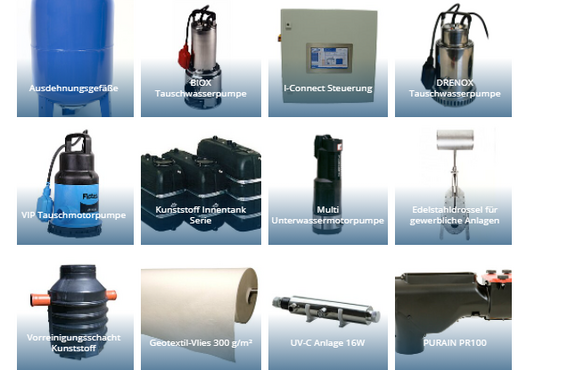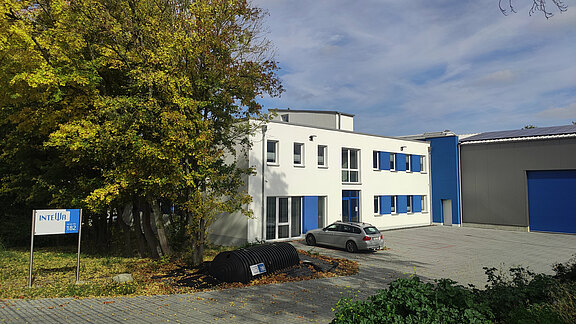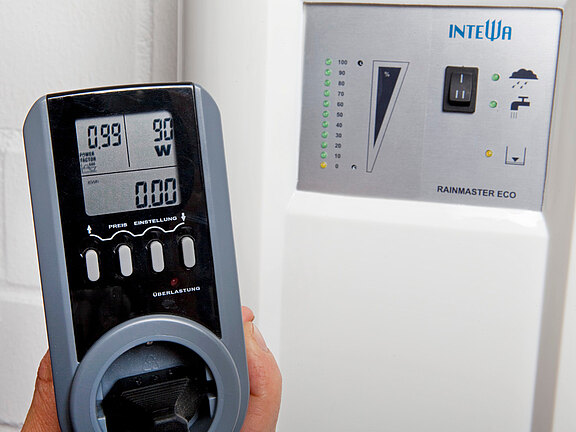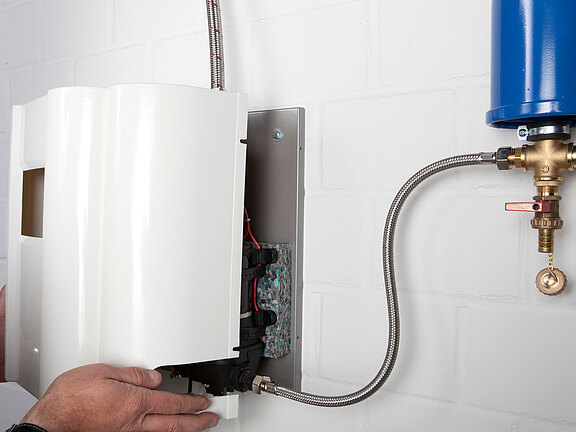In the field of ecological housing technology, the use of rainwater is, today, an element which is taken for granted. Most of the rainwater installations are installed in single-family dwellings. It is presumed that there are some 1.5 million such installations in Germany alone (Source: fbr – Fachvereinigung Betriebs- und Regenwassernutzung e. V. [fbr]). This leads to drinking water savings of approximately 82.5 million cbm/year; an excellent contribution to our environment.
The typical rainwater pump in single-family dwellings is single- or multi-stage, and is installed as a single pump, or in module form. It has an output of between 700 and 1,100W. An average output of 55 cbm/year results in – according to test measurements by INTEWA – energy consumption of
1,6 kWh/cbm. In Germany, approximately 132 GWh are consumed annually by rainwater pumps.
It is here that the Ecological Design Directive (EuP) for energy- driven products gains in importance. It is aimed at energy- driven products, of which there are 200.000 units in Europe, which are presumed to have a considerable effect on the environment, or show great potential for improving their environmental sustainability. The pumps which are used in rainwater installations are also covered by the EuP; under points 8.6 “Standby-Losses“ and 13.11 “Electric Motors“: Stringent efficiency standards are laid down for almost all motors with outputs of between 0.75 and 375 kW, which must be implemented in the next few years. In short, the manufacturers of these products will be required to improve the energy efficiency of their products.
The problem, however, goes deeper. Rotary pumps are used in rainwater installations, standard pump industry products. Unfortunately, their output does not match the needs of the connected consumers. They are not optimised for use with rainwater; rotary pumps use substantially more energy that is necessary. An example: The main consumer of a rainwater installation, a WC, needs 5 l/min to fill. A rotary pump with an output of 900W tries, unsuccessfully, to convey 80 l/min into the WC tank. So 90% of the energy for each WC use is wasted. This is only one example: No consumer in a single-family dwelling needs such large volume flows.
The new INTEWA RAINMASTER ECO uses 75 % less energy
The INTEWA RAINMASTER ECO is an innovative solution. With a volume flow of 10 l/min, and pressure of 3.5 bar, its performance is optimally matched to the typical consumer in a singlefamily dwelling; such as washing machine, WC, garden hose or pressure washer. The new complete module works using quiet and energy-saving diaphragm pump technology; thereby reducing the power consumption from 900W to an economical 90W.
Within the framework of a survey on the electricity consumption of rainwater installations carried out on behalf of fbr, INTEWA provided power measuring devices to a number of customers. A broad spectrum of standby performances, start-up behaviour of the various pumps, differences in energy consumption resulting from differing consumer behaviour, and connected consumers were investigated. In an average comparison with the multistaged rotary pumps, the INTEWA RAINMASTER ECO showed an effective energy saving of 75 %. If Germany’s rainwater installations were fitted with the INTEWA RAINMASTER ECO, almost 100GWh of electricity could be saved annually.
Taking this energy saving into account, the total current annual savings (based on 5 €/cbm drinking water and sewage costs) would be up to €250. At a recommended purchase price of approximately €700, the INTEWA RAINMASTER ECO could also be attractive for existing rainwater installations. The positive side-effects: The INTEWA RAINMASTER ECO already complies with the stringent efficiency standards of the future European Eco-design Directive.
Author: Oliver Ringelstein
INTEWA GmbH
(4305 characters, including space)





